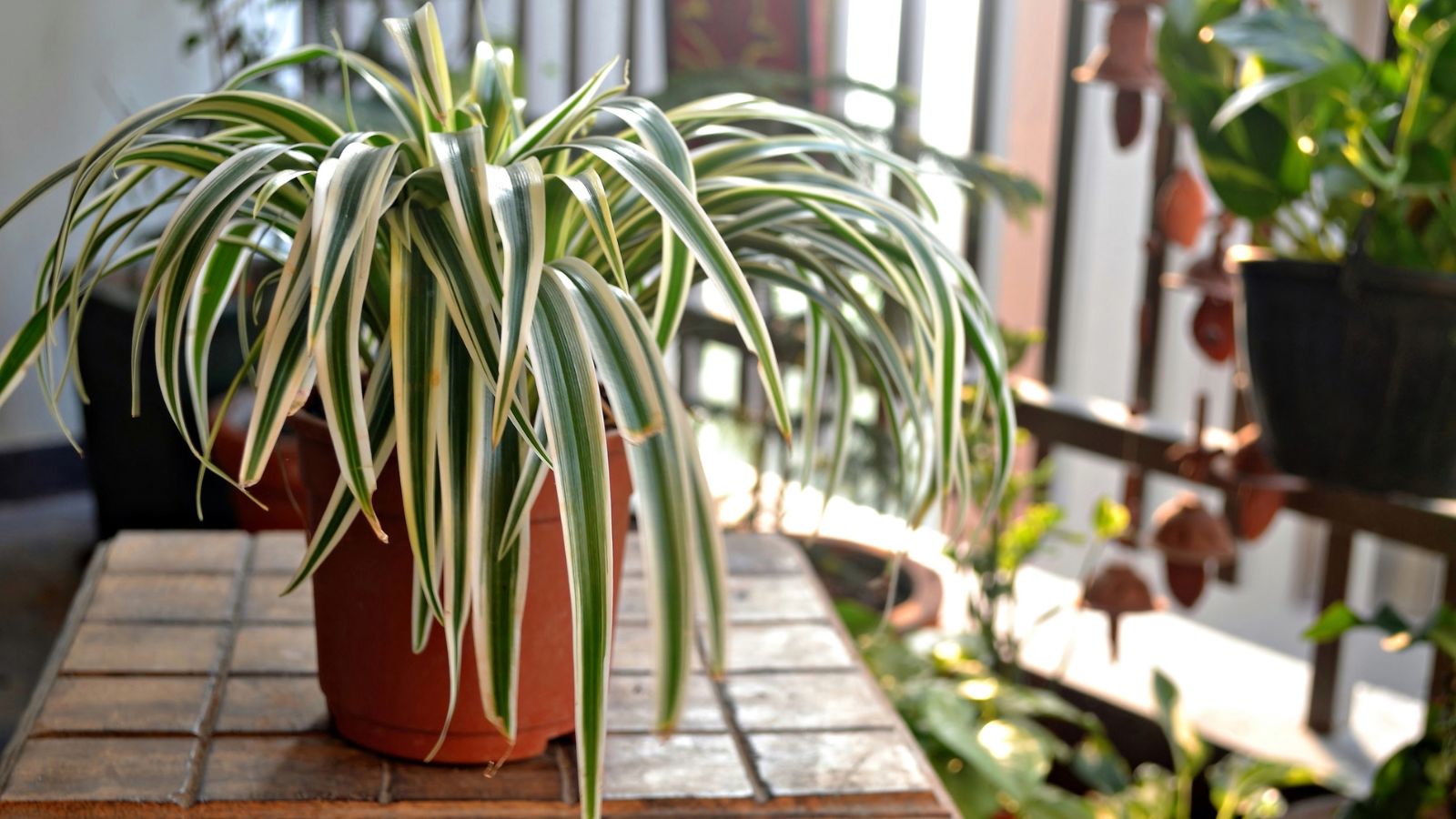When to water a spider plant – an expert guide for a happy house plant
House plant experts reveal when to water your spider plant to keep it happy, and throwing out new shoots


Spider plants, also known as Chlorophytum comosum are one of the most popular and easy perennial houseplants to own, particularly amongst new plant owners, and if you know when to water them you can keep them healthy with very little effort otherwise.
Watering spider plants is all about striking the right balance, since these plants are sensitive to waterlogging if overwatered, but do not like to dry out entirely either and need different amounts of water depending on the season.
So, if you are caring for a spider plant (or two!), this is what plant experts advise you to do when it comes to establishing a watering routine.
When to water spider plants

A good spider plant watering routine, often once a week will usually suit these easy plants; however, no plant should just be watered because it's the day you usually water them. All should be first checked regularly in case they are thirsty, or drowning from over-generous watering.
How to check if your spider plant is under- or over-watered

Spider plants will give you a clue when they are over- or under-watered, or generally unhappy. One sign you can look out for is that their strongly striped leaves will become much paler. This tells your plant is unhappy, but if you are not sure whether that means they need water or not, the easiest way to know is to check the soil moisture levels before watering again.
The simplest way to do that is with the 'finger test', says Tim Graham, Chief Horticulturist at Yard and Garden Guru: ‘Putting your finger about an inch or two into the soil to feel if it's dry to the touch is an indication that your spider plant may need watering.’
Bear in mind that spider plants are native to southern Africa, where conditions can be quite dry. Spider plants have evolved to handle a bit of drought, so if you're ever in doubt, it's usually safer to err on the side of under-watering.
Design expertise in your inbox – from inspiring decorating ideas and beautiful celebrity homes to practical gardening advice and shopping round-ups.
If, however, your soil is bone dry and your spider plant's leaves are very pale, it's time to water, allowing excess water to drain out of the bottom of the pot: very few plants enjoy having their roots sit in water.

Tim is a passionate horticulturist and landscape designer with over 20 years of experience in the industry. As the founder and chief horticulturist at Yard And Garden Guru, he aims to empower gardeners of all skill levels with expert advice, innovative ideas, and eco-friendly practices.
How often to water spider plants
As we have said above, it's always worth checking your spider plant's soil before watering it so that you get the timing right, but having a good understanding of the frequency of watering depending on the conditions is key to establishing a healthy routine.
'Spider plants usually require more water in the warmer months as the sun dries their soil out and these are the times when the plant is more active, so you can expect to need to water them twice a week,' explains Christine Tobar, Owner and Founder of Botanicoeur.
'During colder months they may only need to be watered once a week. Watering frequency will vary as well depending on the amount of sunlight the spider plant is receiving and how light its environment is.'

Christine is the owner and founder of Botanicoeur, a plant interior design company based in Baltimore County, Maryland. She started Botanicoeur in 2022 due to her love of plants and interiors. Christine is a huge proponent of mental health awareness as plants are an easy, natural way to boost your mood and productivity in your home.
How much to water a spider plant?
Watering regularly is one thing, but how much should you water a spider plant to match the frequency of watering?
Zahid Adnan, Founder of The Plant Bible, says that 'when watering your spider plant, it is beneficial to thoroughly moisten the soil until water drains through the drainage holes.
'Ensure that the excess water is allowed to drain away, as waterlogged soil can lead to root rot. Empty the saucer or cache pot after a few minutes to prevent the plant from sitting in standing water.
'While general guidelines are helpful, it's crucial to observe your spider plant's response to watering. Wilting leaves or a drooping appearance can indicate under-watering, while yellowing or mushy leaves may suggest overwatering. Adjust the watering frequency accordingly to meet the plant's needs.’

Zahid is a renowned figure in the gardening industry, with extensive experience and hard-earned skills in horticulture. He is the Founder and Editor of theplantbible.com.
FAQs
Do spider plants like to be bottom watered?
Yes, spider plants like to be bottom watered, especially when they are fully dried out and in need of a drink. Bottom watering ensures that the plant is receiving deep watering, and this technique is normally used when your plant is dehydrated. You can do this by placing your plant in a shallow container filled with water.
Spider plants are a great addition to your home, and with the right watering routine, they are so easy to look after. There are many spider plant benefits, and it is super easy to propagate spider plants, too, giving you more young plants to nurse.

Lucy Searle has written about interiors, property and gardens since 1990, working her way around the interiors departments of women's magazines before switching to interiors-only titles in the mid-nineties. She was Associate Editor on Ideal Home, and Launch Editor of 4Homes magazine, before moving into digital in 2007, launching Channel 4's flagship website, Channel4.com/4homes. In 2018, Lucy took on the role of Global Editor in Chief for Realhomes.com, taking the site from a small magazine add-on to a global success. She was asked to repeat that success at Homes & Gardens, where she has also taken on the editorship of the magazine.